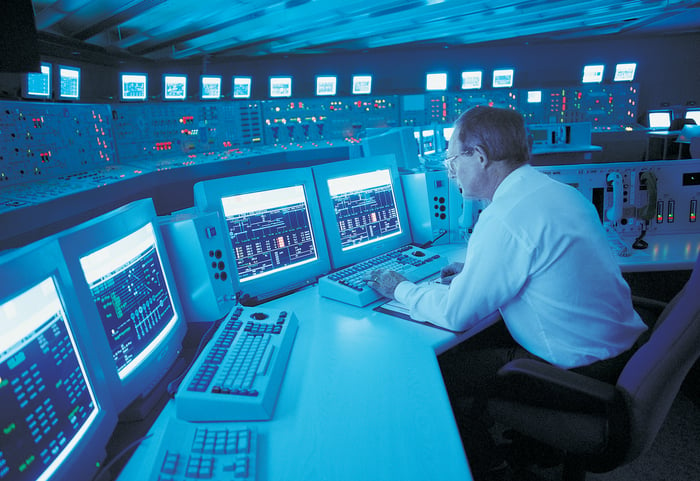Financial results from The Southern Company (SO -1.56%) have been overshadowed by a massive construction project for years. There's good reason for that, given that nuclear power plants Vogtle 3 and 4 faced delays, and the cost rose well above original projections. But the company has finally started to make some very important progress. And the pace of success is likely to pick up from here.
The first new nuclear power plant in the U.S. in years
When regulated utility Southern started the Vogtle project, as the two nuclear plants are collectively known, it knew it was taking on a huge task. Nuclear power plants are large, complex, and take years to complete. But management didn't, perhaps, expect all of the headwinds it would end up having to deal with. There were delays, cost overruns, and charge-offs.

Image source: Getty Images.
Still, it's worth noting just how problematic the construction of these two nuclear power plants has been. Southern's original contractor, Westinghouse, filed for bankruptcy. At that time, a utility peer decided to throw in the towel on a nuclear plant it was building with Westinghouse's help. However, Southern chose to bring project management in-house. Then there was the coronavirus pandemic, which meant that workers had to practice social distancing. That limited how many construction workers could be in one place at any given time, reducing productivity. Of course, there were smaller issues along the way, like simply finding enough employees to build two nuclear power plants at one time.
While none of that is meant to excuse the delays and overruns, it does provide an important backdrop for what transpired. But the first of the two plants, Vogtle 3, is now attached to the grid. That's a huge success, and it means that Southern will have decades' worth of clean energy to support its business. Vogtle 4 is still being built.
Finally, Southern gets some wins
While it was clearly a big deal to get Vogtle Unit 3 up and running, there's more to the story here. For a long time, Southern has said that it was using what it learned from building Unit 3 to speed up its progress on Unit 4. Now is when that becomes far more important, as the company looks to finish Unit 4 by the end of 2023 or in early 2024. Notably, the company projects that a three-month delay of the in-service date would be a $0.05 per share headwind to earnings.
During the second-quarter earnings conference call, management highlighted some key differences between Units 3 and 4 on the productivity front. For example, hot functional testing required 94 days for the first plant but just 88 days for the second. Basically, Southern was able to find the big trouble spots within the process of testing Unit 3 and fix them before it tested Unit 4.
But there were some larger gains, as well. Going from hot functional testing to a complete 103(g) finding from the Nuclear Regulatory Commission (NRC) took 371 days for Unit 3. A 103(g) letter "signifies that the new unit has been constructed and will be operated in conformance with the Combined License and NRC regulations. No further NRC findings are necessary in order for Southern Nuclear to load fuel or begin the start-up sequence for the new unit." On Unit 4, that only took 88 days.
These are just two high-level examples, of course, but they lay out the very important point that Vogtle Unit 3 was the first new nuclear plant built in the United States in years. It wasn't easy to rebuild the knowledge base after such a long period of time. But, having completed Unit 3, Unit 4 is benefiting from the experience gained on Unit 3. While it may seem like an aggressive timeline to get the two units up and running in close proximity to each other, given the learnings from Unit 3, there's every reason to believe it can be done.
There's a big benefit for shareholders
Once Vogtle 3 and 4 are both complete, the story behind Southern changes materially. Notably, management will go from spending money on a big project to collecting money from two new nuclear power plants. The company expects the two plants to boost cash flow from operations by around $700 million. That's money that can be put to good use paying down debt, investing in other growth projects, and, perhaps, speeding up the utility's dividend growth rate. That last point would, of course, be music to the ears of dividend investors who stuck by the company through the difficult construction process. And the sooner, the better.





